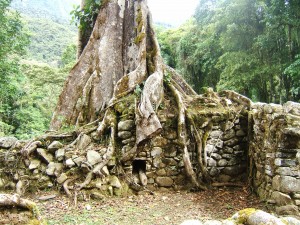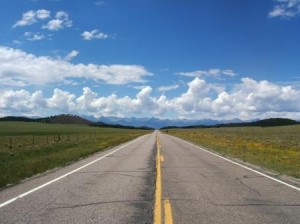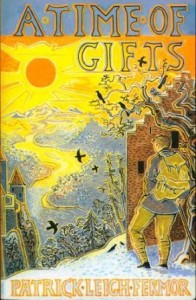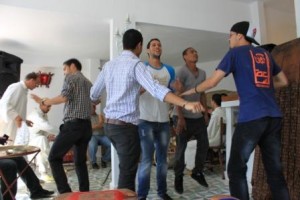Penguins and Battlefields
 .
.
No one would ever go to the Falklands for either the weather or the view. That at least has been the traditional opinion ever since Darwin commented on his first arrival, ‘scarcely any views can be more dismal than that from the heights: moorland and black bog extend as far as the eye can discern, intersected by innumerable streams, and pools of yellowish water….. These islands have a miserable appearance.’
Like the Hebrides though, catch them on a good day with a bit of sun and they have their own wild beauty. Throw in some accessible colonies of penguins and you have the beginnings of a tourist trade; a surprising amount of passenger boats now stop there for a combined ‘Penguin and Battlefield’ tour, with fish and chips in one of the pubs in Port Stanley afterwards.
One reason for the bitterness the islanders feel towards Argentina is apparent as soon as you drive out of Stanley – the amount of land that is still uninhabitable because of landmines, including many of the beaches which they used to play on as children. The cost, both human and economic, of trying to clear such large areas has proved too much.
…
Penguins and Battlefields Read More »


 Well speaking as someone who regularly swims in it anyway, why the hell not make it ‘a designated bathing area’! It would be a fabulous resource that could be accessed from half the Home Counties. And get rid of the many pathogens that Thames Water currently pumps in there……
Well speaking as someone who regularly swims in it anyway, why the hell not make it ‘a designated bathing area’! It would be a fabulous resource that could be accessed from half the Home Counties. And get rid of the many pathogens that Thames Water currently pumps in there……
 Every year, the Lima seafront becomes more Californian; not just the surfers hanging out in the Pacific breakers and paragliders spiralling around the cliffs, but the sense of affluence: there are families strolling along the promenade after eating at one of Lima’s increasingly fashionable seafood restaurants and the shopping malls are full of IPods, boutiques and tropical fruit flavoured ice cream.
Every year, the Lima seafront becomes more Californian; not just the surfers hanging out in the Pacific breakers and paragliders spiralling around the cliffs, but the sense of affluence: there are families strolling along the promenade after eating at one of Lima’s increasingly fashionable seafood restaurants and the shopping malls are full of IPods, boutiques and tropical fruit flavoured ice cream.

![IMG_3683moulay idris#] - lo res](https://www.thewhiterock.co.uk/wp-content/uploads/2011/06/IMG_3683moulay-idris-lo-res.jpg)

